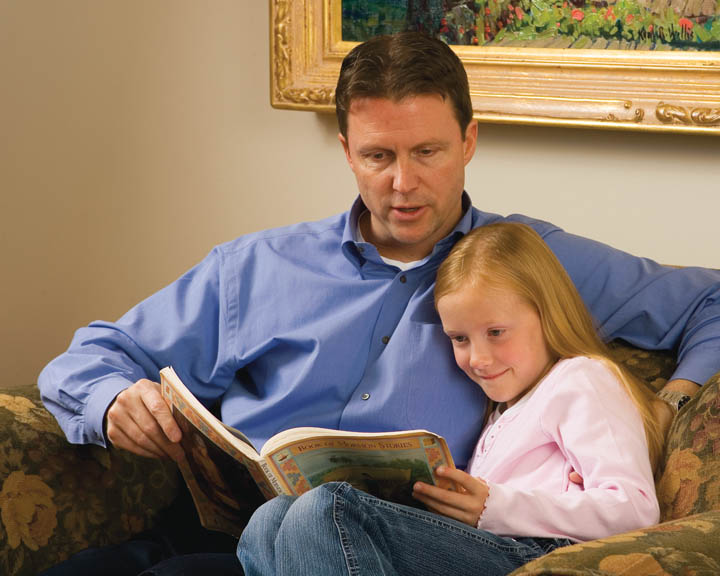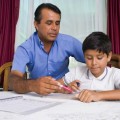I used to think that public school was the perfect place for a child with special needs, autism spectrum disorder, or a disability. These children need unique help and out of the box thinking. In many cases what works with these children wouldn’t come to mind and may not even seem logical. I assumed that the training specific to special education teachers can give them these unique skills the child would need. In many, many cases, this is true. Remarkable teachers work together with parents to help the child make great strides, far beyond what anyone thought possible. I have a dear friend who is learning to speak now as a nine-year-old. The patience and perseverance of years of therapy is reaping rewards. He knows four words and is starting to play around with focused sounds more. This is amazing for him.
 I have also seen times when the child has found the school environment nearly impossible to manage. A friend’s son was pulled out of high school. The bullying and social pressure was not working at all for him. He was on 12 different medications to help him deal with depression and anxiety and other reactions to the social situation. At home, he regularly takes 1 medication and has another for anxiety in certain situations. The difference for him is staggering. He smiles more. He learns more. Their family time is markedly better. He loves learning and has more time to spend with his father exploring computer programming. That’s quite a trade off when their evenings used to be spent fighting over homework as he had his post school breakdown.
I have also seen times when the child has found the school environment nearly impossible to manage. A friend’s son was pulled out of high school. The bullying and social pressure was not working at all for him. He was on 12 different medications to help him deal with depression and anxiety and other reactions to the social situation. At home, he regularly takes 1 medication and has another for anxiety in certain situations. The difference for him is staggering. He smiles more. He learns more. Their family time is markedly better. He loves learning and has more time to spend with his father exploring computer programming. That’s quite a trade off when their evenings used to be spent fighting over homework as he had his post school breakdown.
Each autistic child is different. How they experience the world and how they manifest their autism and how it affects their education is unique. This is an attempt to briefly introduce autism. I am hoping to inspire empathy and understanding.
Autism Spectrum
Autism spectrum disorder is frequently related to how a child sees, hears, smells and feels everything in the environment. Perhaps a child doesn’t naturally prioritize senses, so everything they hear: the voices, the chair squeaking, the wind, the whispering, the papers being passed, the books and the teacher . . . are all received on the same level of importance. Add any sensitivity to sights, smells and textures . . . you find the child working overtime just to survive the stimuli in the classroom. Autistic children frequently struggle with textures. Imagine going through school while hating the feeling of paper? Imagine only wanting to eat white food. In some cases this hard work of coping with the environment necessitates extra medication. In other cases, therapy, adaptations, and extra adult interaction are necessary. Change is always challenging and schedules are a necessity.
 Some autistic children try to focus and calm their mind by “stimming”. They may rock, flap their arms, pace, focus on a few favorite objects or other repetitive behaviors. One autistic child said he flapped his arms because when he didn’t it felt constantly as if he were “about to sneeze”. It was that necessary for him. In some cases these behaviors can be replaced by other, more acceptable coping techniques. Lining up pencils is far easier in a classroom setting than flapping arms . . . if the child can and will make the adjustment.
Some autistic children try to focus and calm their mind by “stimming”. They may rock, flap their arms, pace, focus on a few favorite objects or other repetitive behaviors. One autistic child said he flapped his arms because when he didn’t it felt constantly as if he were “about to sneeze”. It was that necessary for him. In some cases these behaviors can be replaced by other, more acceptable coping techniques. Lining up pencils is far easier in a classroom setting than flapping arms . . . if the child can and will make the adjustment.
Imagine how this child fits in the public school system. Without careful supervision, there is frequently bullying. We are adults and stimming can be unnerving to us. It is hard for us to empathize and consider such overwhelming sensory issues. Children can be loving and sensitive in such situations, but in other situations it is brutal for the child.
All children try to “Be good” away from home and crash a little when they are home and comfortable. When surviving school takes so much effort, the crash may be very dramatic at home.
IEP Meetings for Autistic Children
IEP meetings: IEP meetings are meant to adjust the curriculum and environment to best meet the needs of the child. In an ideal world the parents, teachers, administrators and counselors work together and communicate beautifully and create a synergistic problem-solving environment. We motivate a struggling child creatively by playing to his strengths; a fabulous young boy earned the right to pogo over his principal, in front of the whole school. Bless that school and IEP group for working outside of the box.
In other cases IEP meetings can be a nightmare as parents feel outnumbered, teachers overwhelmed, and some of the people who should be focusing on the needs of a child are focusing on their budget and test scores. Already exhausted, parents find themselves battling those who could be their greatest support . . . just to meet the basic educational and social needs of the child.
This is not to say there aren’t good school environments for autistic children. Many of these suggestions can be adapted in a small class setting. In some cases though, the control and comfort of home is undeniable.
 Sensory environment: Limit sensory input. Have a visual schedule and stick to it. Consider his sensory sensitivities like an allergy. We don’t force peanuts on a child with peanut allergies . . . So can we somehow be more sensitive to autistic children?
Sensory environment: Limit sensory input. Have a visual schedule and stick to it. Consider his sensory sensitivities like an allergy. We don’t force peanuts on a child with peanut allergies . . . So can we somehow be more sensitive to autistic children?
Having grown up in the home, the sounds, sights, smells and textures are much more familiar. Fewer changes and disruptions occur in the home. Even my large household of twelve is nothing compared to the colors, sights, and sounds a child experiences on any average school day. With headphones in his room, a child can focus his brain on math. Any clothing and dietary needs are more easily addressed. For years, my son preferred bread, milk, and honey if it had been a stressful day. Wo to the tired mom who made it bread, honey, then milk! Sequence! That was something I could do at home, though. The numbers of a school setting make such adaptions difficult.
Develop a great poker face. Lean the fine art of distinguishing between what is actually wrong and what is merely different, or outside of your comfort zone. Ignore the different behaviors. Ignore them. Completely.
It may be surprising what a child can do once they don’t have to constantly fight the environment. The extra force they may be able to focus towards their education may bring startling results.
Parent Involvement in an Autistic Child’s Learning:
All of the energy and time previously spent in IEPs can be spent on curriculum. The child’s energy can be focused on their interests and education instead of coping with the environment. The schedule can be tailored to the child, instead of having the child medicated and trained to fit the schedule. Parents already know their children very well. Autism spectrum disorder manifests itself uniquely in each child. The love of the parent and family and their familiarity with the likes and dislikes of the child reduces the anxiety level of the child considerably.
Parents are not focused on this semester or this one task. Parents are thinking of their child as an adult, their child on vacation, and their child in the workforce. Their natural love for their child makes them hopeful. This open-ended optimism combined with unconditional love is a powerful force in the life of an autistic child.
Parents are naturally more sensitive to their children. Some autistic children don’t discriminate pain as a sensation more worthy of notice and requiring a response. They don’t feel pain normally. This can be very dangerous. A sensitive parent can learn to notice other ways the child may indicate pain and alert them to a medical need.
Socialization of Autistic Children
Most autistic children struggle with learning normal emotional context clues. The flow of a conversation, appropriate emoting, how to detect change and face it, how to lose acceptably . . . and many, many other unwritten rules that we tend to absorb without thinking, frequently require specific instruction for autistic children. Imagine if you needed step-by-step instructions for breathing! These social skills that are so necessary in daily interactions require patient, consistent effort over years. This is best done in an environment of love. A parent knows exactly where a child is lacking and where they are ready to be challenged.
A homeschool autistic child gets the benefit of having his social skills practice be in a friendlier, controlled environment. Their peer interaction can surround something they love and are familiar with: music, photography, computer games, yugio, art, or wherever the child’s skills lie. We all socialize better when we are set up for success. When a child is allowed to showcase their skills and interests, other children will get to know them for who they are, not the package of manifested behaviors and labels.
Socialization for the autistic child most likely requires a more hands-on approach. The very nature of homeschool groups allows for greater choice and control by all involved. The increased adult-to-child ratio in homeschool settings and the freedom and limited numbers involved all allow for individual adaptation to better meet the needs of an autistic child. In a school setting it would be difficult to speak with all of the parents of the children your child interacts with. With homeschool it’s very likely you speak with them regularly. That extra level in involvement can change the social environment for your child.
We tend to be more forgiving of young boys in social settings. These expectations can be challenging for a young autistic girl to face all day long. We need to carefully find ways to allow young girls to connect based on what they can do, instead of how smoothly they fit in to social situations.
Individual Adaption with Autistic Children
In some homeschool circles, public school is referred to as a conveyor belt. The average child doesn’t learn in an easy continuous, regular form. The autistic child learns in fits and spurts, with great speed in some areas, astounding depth in others and agonizing crawl in still other situations. The very nature of homeschool allows for both the time and focus in great depth as well as the patient leading along in problematic subjects. Curriculum can be changed quickly when it isn’t working and more options are available in the home.
My son struggled with writing for years. For most subjects I did the writing. We did history and science and creative stories, with me as the scribe. I wasn’t testing writing in those subjects and wanted the focus to be on what he did know. As he aged, he was able to express why writing was so hard for him. The voice in his head was so quick, he couldn’t physically keep up. When writing was required, he created the whole script in his head. He would repeat the entire paragraph or page of script to himself, write down as much as he could remember, then to write another sentence he would have to go over the script from the beginning. It was laborious. He values brevity!
We worked on building up what he could remember and write. We wrote as little as possible. We worked on building up his typing speed. The practice and patience, and his own lack of built up frustration from having to write, allows him to enjoy creative writing today. He finished his first short book of more than 50,000 words last month and we are going to start the editing process. I had no idea such a thing would be possible back in the early days of frustration.
In my dreams we focus less on where a child sits, or whether he sits at all, and more on how we can best educate and inspire each child.
About Britt Kelly
Britt grew up in a family of six brothers and one sister and gained a bonus sister later. She camped in the High Sierras, canoed down the Colorado, and played volleyball at Brigham Young University. She then served a mission to South Africa.
With all of her time in the gym and the mountains and South Africa, she was totally prepared to become the mother of 2 sons and soon to be 9 daughters. By totally prepared she means willing to love them and muddle through everything else in a partially sleepless state. She is mostly successful at figuring out how to keep the baby clothed, or at least diapered, though her current toddler is challenging this skill.
She feels children naturally love to learn and didn’t want to disrupt childhood curiosity with worksheets and school bells. She loves to play in the dirt, read books, go on adventures, watch her children discover new things, and mentor her children. Her oldest child is currently at a community college and her oldest son is going to high school at a public school. She loves to follow her children in their unique paths and interests.
She loves to write because, unlike the laundry and the dishes, writing stays done. Whenever someone asks her how she does it all she wonders what in the world they think she’s doing.
Twitter •







Autism is truly a spectrum disorder. One person with it can be so different from another who is also on the spectrum. I chose to remove my son from middle school when the bullying had become physically dangerous. That was also the same time that he finally had a diagnosis! I am so grateful we had the support of the homeschooling community and a wonderful experience with homeschooling. My son who also wrote only when he had to, has also benefited by learning to use a keyboard. He is now in college, majoring in technical writing and trying his hand at writing sci-fi novels. My grandson, on the other hand , was diagnosed as a pre-schooler and had the benefit of early invention. I think for him that being in school has been a better alternative. His school has been supportive and met the needs of he and his family. Every situation is different and we as parents have the responsibility to make prayerful choices.
One thing I realized when I started homeschooling my children, who have some learning disabilities, was that they didn’t really even seem to have any at home. We naturally adapted our learning methods so they could focus on learning, not fighting the disability. In those days, most teachers knew nothing about computers and wouldn’t allow typed assignments. At home, we just typed everything. They did learn to handwrite, but there isn’t much need for it today unless you choose to do it. Their computer skills were more useful in the long run. We could learn in whatever ways they learned best and school was less stressful and more productive.
Thank you, Britt! I have met so many people who do homeschool because of their childs’ challenges. A dear friend has a son who was diagnosed with Aspergers. He spent years in therapies, on medications, and even in a special class for kids on the spectrum. The best thing that she ever did for him was to bring him home.
Both of my sons are on the spectrum. I tried putting my youngest in public school and it was a disaster. I see them thrive at home, whereas I think regular school would have squashed them, made them feel inadequate. In homeschooling, they have a great peer group of friends who love and accept them for all of their quirks. Best of all, many of their friends have “quirks” too, but they all seem to get along just fine. Many people notice that my sons are polite and kind.
Being aware of the issues surrounding the Autism Spectrum has helped me to know how to better help my boys. Thankfully, I have a great support network where I live and am constantly learning from the other homeschooling mothers.
I had my youngest in occupational therapy for a while. I told the therapist all of the work that we were doing at home. After 6-7 sessions, she told me that she thought that O.T. wasn’t needed for my son, that what I was doing at home was sufficient. It really hit home then that what I have to offer my children can sometimes be as good as what the professionals offer, as long as I remain we informed and educated on the issues.
Lastly, regarding your son and writing, have you investigated Diane Craft’s “Brain Integration Therapy Manual”? It is cheap and is geared towards use in the home. It has helped my boys with their writing. Many of my homeschool friends who have kids with challenges have also seen huge differences in their child’s learning.
Christine, thanks for giving success stories from both sides! Each child and family and situation is different! A good parent researches to find what will work for them!
Terrie, I have also found it amazing how disabilities dim in the home. I do think part of this is reduced stress on the child and the flexibility of the situation. I’m glad you were able to homeschool.
Christina, What a validating experience to recognize that what you were doing was what your child needed. It’s the little things. I’ll look into that book. thanks!